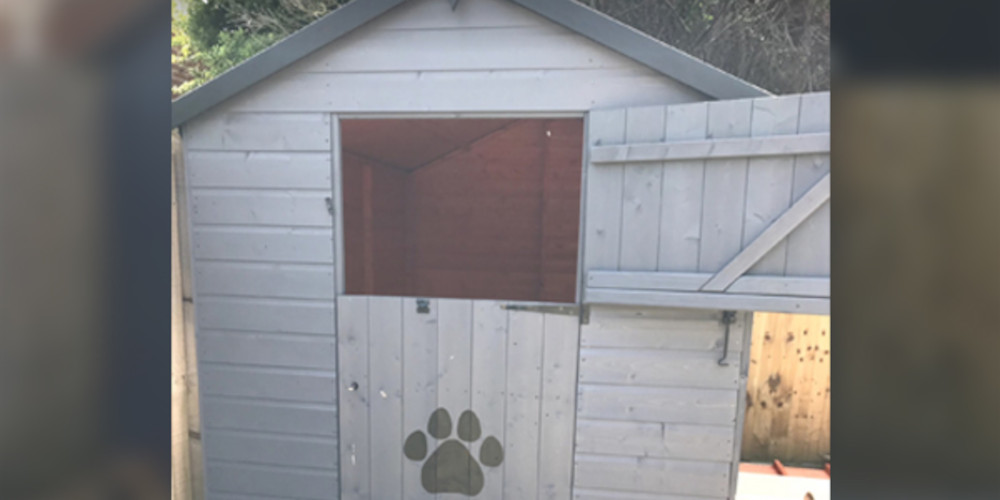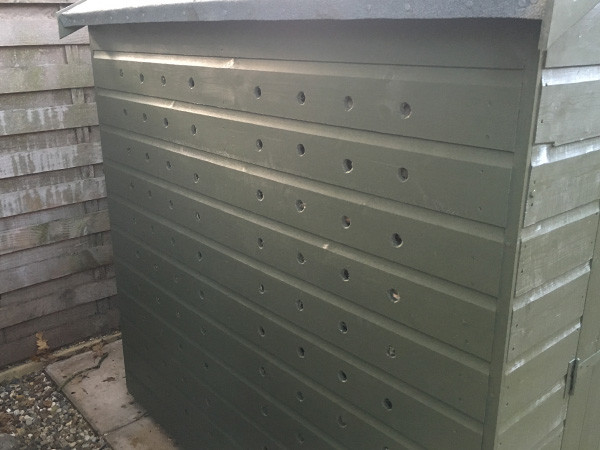How to Ventilate your Shed or Log Cabin
Published: 05/08/2020

So you’ve picked out the ideal spot in your garden, you’ve built your shed or your log cabin and you’ve moved in all your equipment and decorated it to your heart’s content. But after you’ve stood back and admired your hard work, after you’ve enjoyed the fruits of your labour for a few days, it’s time to start thinking about maintenance and ensuring your shed or log cabin can stand up against the elements. Your first step in preventing wear, tear and mould is by introducing proper ventilation to your shed or cabin. Ventilation is the key to ensuring that the inside of your shed or cabin doesn’t succumb to mould or deteriorate with damp. In this blog, we’re going to take a look at why keeping the air flowing in your outbuilding is important and provide some nifty ideas and tips on how to ventilate your shed or how to ventilate your cabin.
Whatever building you’re putting up, ventilation is an essential part of protecting the building materials in the long term. If things get really bad, too much structural rot can mean that the building will need to be torn down for safety reasons, so it’s important that you minimise the opportunities for that rot to take hold. Because they’re made of wood, this is even more important for log cabins and sheds – keeping the air flowing through garden buildings can make all the difference in ensuring that yours is kept in tip-top shape. It’s also about what’s kept inside the shed or cabin. Insufficient ventilation can cause furniture, tools, and equipment to degrade in the damp. If you’ve created the man cave or she shed of your dreams, packed with all your valuable stuff, the last thing you’ll want is to see your own private retreat looking less than perfect. Another good reason to promote good ventilation is your own health and safety. If left for too long without ventilation, mould can build up in your shed, and if you’re working or relaxing in your shed for long periods, this mould could cause irritation and discomfort.
Considering ventilation when installing your shed or cabin
If you haven’t erected your shed or cabin yet then there’s some good news! You can make a lot of smart choices when choosing a spot for your shed or cabin that will make ventilating it a lot easier. Wind direction is your friend when picking somewhere to put your shed or cabin - you’ll want to place yours where it can benefit most from the additional air pushed through by the wind. Position your shed where the gable is facing the wind (the gable is the part of the building’s roof where two parts of the roof meet) and you’ll instantly feel the benefit once you’ve put your cabin or shed up. Another factor to consider when you’re choosing a location for your shed or cabin is how much space you want to leave around the building. Leaving a space of around 3 sq. ft. between your shed or cabin and anything else will allow for a corridor of air to freely circulate around the building, letting the air in and out of your cabin or shed. Leaving that space also brings a host of other benefits too – putting some small distance between your building and the plants and trees that surround it will mean the moisture from the foliage won’t transfer so easily to your shed, keeping it protected against mildew and damp for longer. Leaving at least 2ft. between your shed and anything is also a pre-requisite for the Tiger Sheds guarantee, so it’s well worth taking the time to ensure your shed or log cabin has the space it needs to thrive.
How to ventilate your shed or cabin
Now we’ve covered why ventilation is important and where you can place your shed for better ventilation, let’s take a look at how you can ventilate your cabin or shed to keep a healthy flow of air pumping through the building.
Opening the doors and windows
Let’s start with the most basic way of keeping your shed or cabin ventilated – keep the doors and the windows open. It might seem obvious, but by simply opening your windows and doors, you’ll get the air in and out through the door and windows, carrying the moisture out of your garden building and into the outdoors beyond. This technique is also the most straightforward way of cooling things down on a hot day. Of course, it’s not practical to keep the windows and doors open at all times – you can’t keep your shed or cabin unlocked overnight for example – but it’s definitely a start.
Installing wall vents
The next, and most convenient step to improving ventilation standards in your home is by installing wall vents. Wall vents are regarded as passive ventilation fixtures, which means they keep air channeling through your shed or cabin, securely, and without needing any external power like wind or electricity. The air inside the shed is continually replaced by fresher air through the vent, keeping everything nicely ventilated and refreshed. The vents are shaped like grills and most are backed with a mesh to keep out unwanted insect visitors. Place them high up on the gable walls to maximise the amount of air running through and be sure to keep them clean to enable the air to easily pass through. The wall vents will keep the shed or cabin cool in the summer and damp-free in the winter, so they’re well worth the time and money investment.
Adding an electric fan
If you need better ventilation - if you have a larger shed or cabin for example - or if you’re storing liquids like petrol that can give off fumes, you’ll need to install an active ventilation system. These systems give the fresh air a boost to draw it into the shed and push the stale air out. They’re a better option for more heavy duty ventilation needs in airtight buildings, but they do require more effort to install and to run. The electric fan is a good example of this. Using a basic on/off switch, an electric fan does exactly what you’d expect it to do. The blades rotate, drawing fresh air into the shed or cabin and keeping it circulating, and you get stale air from the inside pumped out through the fan. Place your fan on a gable wall opposite a vent to maximise airflow. You will need a power system for the fan however, so be sure to check whether you can provide electricity for the shed before installation, either by using solar power or by connecting it to the mains.
Installing a whirligig - The whirligig is a favourite of many garden building owners for a number of reasons. For those unfamiliar with whirligigs, they are vents with turbines that are powered by the wind, with the breeze pushing turbines around to pull fresh air into a building. Like the electric fan, a whirligig is an active ventilator, meaning it actively pushes air into a shed or cabin, keeping things fresh and cool inside. Whirligigs are powered by the wind rather than electricity, so they’re more environmentally friendly and cost less to run. In short, they’re a fantastic option for sheds and cabins of all sizes. Install yours on the roof, ideally towards the center of the shed so as to maximise exposure to the wind that powers the turbines, and be careful where you place the hole for your whirligig – placing close to vulnerable spots like the roof battens could threaten the integrity of your cabin or shed.
Shed and cabin sizes, and ventilation
When you’re thinking about how you need to ventilate your shed better, you’ll need to take the size of your garden building into account. With smaller sheds of around 60 square feet, passive ventilation is essential. Because the shed is smaller, there’s less room for air corridors to circulate, so to have somewhere where stale air can escape and new air can come in is crucial to prevent mould and rot, and to let any gases from any substances you store in the shed to escape. This is where wall vents come particularly useful as the most straightforward of your options for passive ventilation. Try to fix these vents near the gable ends of your shed, this will let the wind push fresh air in and stale air out. Any bigger than 60 square feet and you’ll need to install an active or wind-powered solution, like the electric fan or the whirligig we mentioned before. There’s a lot more space in cabins and sheds that are on the larger side, and therefore more air, so you’ll need active ventilation that can cover the whole building Ventilating your shed or log cabin is just one step towards ensuring your garden building is well-maintained, comfortable to be in, and protected against the elements. Buying a log cabin or shed built with the best materials available also goes a long way to making the cabin or shed last. At Tiger Sheds, our sheds and log cabins collections are designed using only the best timber and finest cladding. Each one is built to last and engineered with robustness, sturdiness, and longevity in mind, and with our 20 year guarantee, you can be sure that our sheds can go the distance. Browse through our collection and find your ideal shed or log cabin for your garden today.













